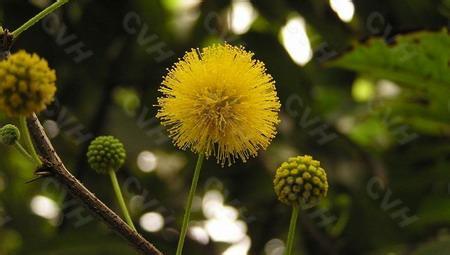Plants thrive all over the planet, despite the fact that many animals love to snack on them. Various hypotheses account for all those plants. One is that predators kill enough plant-eating animals to give vegetation a chance. Another is that plants develop physical and chemical means to defend themselves.
尽管事实上有许多动物喜欢以植物为食,但地球上的植物仍然欣欣向荣。关于这些植物,有许多假说。一种假说称,捕食者杀死了大量的植食动物,为植物的生存提供了机会。另一种假说称,植物使用物理和化学的手段来保护自己。
Now researchers have teased out some of these factors in an East African savanna.
如今,科学家已在东非草原筛选出了真正的影响因素。

The impala—an African antelope—eats grasses and trees and is itself eaten by wild dogs and leopards. Impala often munch on a tree called the acacia. Some acacia have thorns, and some don't.The researchers found that the impala—perhaps not surprisingly—prefer thorn-free acacia. Also, the animals avoid woody areas where predators are more likely to hide.
黑斑羚是生活在非洲的一种羚羊,以草和树木为食,是野狗和豹口中的猎物。黑斑羚经常津津有味地咀嚼一种叫金合欢的树。有些金合欢树长着刺,但有些没有。科学家发现,黑斑羚更喜欢没有刺的金合欢树——也许这没什么令人惊奇的。同时,这种动物不喜欢生存在林木茂盛的地方,因为那里更可能藏着它们的捕食者。
And as a result, the thorn-free, vulnerable acacia are more plentiful in woody areas with plenty of predators. But the thorny acacia are more numerous on the open savanna, where they need to defend themselves. The study is in the journal Science.
结果显示,没刺的、易受攻击的金合欢树更多地生长在林木茂盛的地方,且那儿聚居着大量捕食者。而有刺的金合欢树更多地长在开阔的热带草原中,在那,它们需要保护自己。该研究发表在《科学》杂志上。
The researchers say their findings show that both plant defenses and carnivorous predators help plants thrive. They also say that when humans influence—in part by eliminating large predators—we disrupt longstanding, complex systems. And that we should really try to better understand such systems, and our effects on them.
科学家称,他们的研究表明,植物防御和肉食性捕食者对植物的繁茂都有促进作用。他们还说,当人类参与消灭大型食肉动物时,人类扰乱了长期存在的、复杂的系统。人类真应该试着去更好地理解这一系统,以及人类对这一系统的影响。











